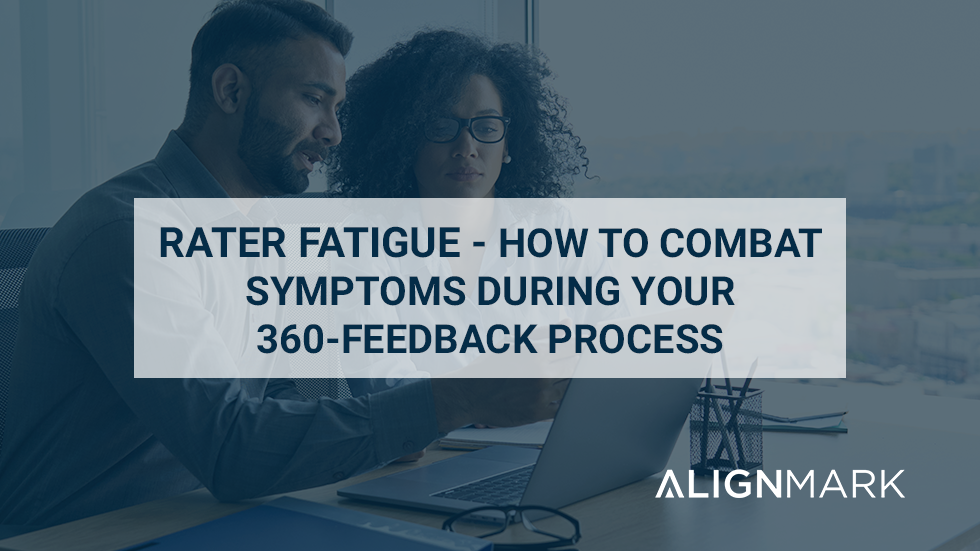We have talked a lot about 360 feedbacks over the past couple of months. In recent posts, we have talked about the best ways to implement these processes to make them the most effective and efficient in any organization. We have also touched on some of the logistics of what must go into a 360 process and the individuals that need to be involved. In this post, we want to focus on the survey raters.
Survey raters are the individuals who are completing the survey on a focal leader. They are someone who has worked closely with the leaders such as a peer, a direct report, a direct manager, etc. These are the individuals who will form the 360-degree view of the focal leader that the report will be generated from. In many 360 projects individuals often will be asked to rate multiple people. For example, a single person could have 6 peers, a manager, 4 direct reports, and themself that all need to be rated. So, this individual could have to complete 12 surveys as part of the 360 initiatives. This then opens the issue of rater fatigue.
Rater fatigue like we mentioned above is when one rater must complete multiple surveys in a short turnaround timeframe. This can occur when the 360 project is a bit larger in scale. This fatigue can cause the answers and the results in the survey by these raters to be less accurate and less reliable.
So how do we combat this rater fatigue? Taking these steps below will ensure that you can have a successful 360 process at any scale in an organization.
5 Tricks Combating Rater Fatigue:
1. Prepare your raters for the 360 processes
It is important that raters know that a 360 process is coming prior to the process being started. This gives the raters time to prepare for the surveys and manages their time better. At this point, the raters will know how much time they must take the survey and how many surveys they are completing during the process.
2. Use relevant surveys for the focal leaders
Relevant surveys are important. Make sure you are using the right survey for the right leader. For example, front-line leaders should not be rated on behaviors that would typically be associated with Directors or Executives. In other words, make sure the content is relevant to the leader. This will help alleviate rater fatigue because the raters will understand the competencies of the leader and be able to answer them without question.
3. Rotate reviews to help rater fatigue
This will help rater fatigue when the overall process is larger. If you are having your whole organization of leaders participate, there will be a lot of overlap in raters. You may be a participant on one, rater as a peer on another, and rater as a boss on another depending on your level of the organization. That is 4 surveys in one process and this number could even grow from that. By rotating reviews by management level or department this may spread out when the raters need to fill out surveys so they are only filling out one or two in each review period.
4. Extend completion time
This is an easy tip for helping rater fatigue. If there are many raters that are completing multiple surveys it is important as an organization to allow enough time to complete the surveys. This may mean making the survey period a few weeks longer than you normally would. This again will help the raters manage their time effectively to get both their work done and the surveys done without becoming fatigued.
5. Limit the number of surveys to eliminate rater fatigue
When setting up your 360 processes it may be wise to put a limit on the number of surveys one individual can rate. This is smart during big processes and ensures that your raters will not become overwhelmed with the number of surveys they are filling out. It is a great precaution to take to help eliminate rater fatigue during the 360 processes.
All these items are easy to implement or use during a 360 process. They are helpful tips that every organization to take to ensure that the raters do not get fatigued during the 360 processes. Combating and eliminating rater fatigue will ensure the most honest answers and accurate results from the overall 360 process. It will also allow your raters to not be overwhelmed by the surveys and processes that they have become a part of.
Related Blog Post: Delivering 360 Feedback Results
Related Resource: 360 Feedback– Your Complete Guide


 Dr. Jaffee (M.A., Ph.D.) is a recognized expert in the field of assessments, and has created effective HR Solutions used by millions of people.
Dr. Jaffee (M.A., Ph.D.) is a recognized expert in the field of assessments, and has created effective HR Solutions used by millions of people.